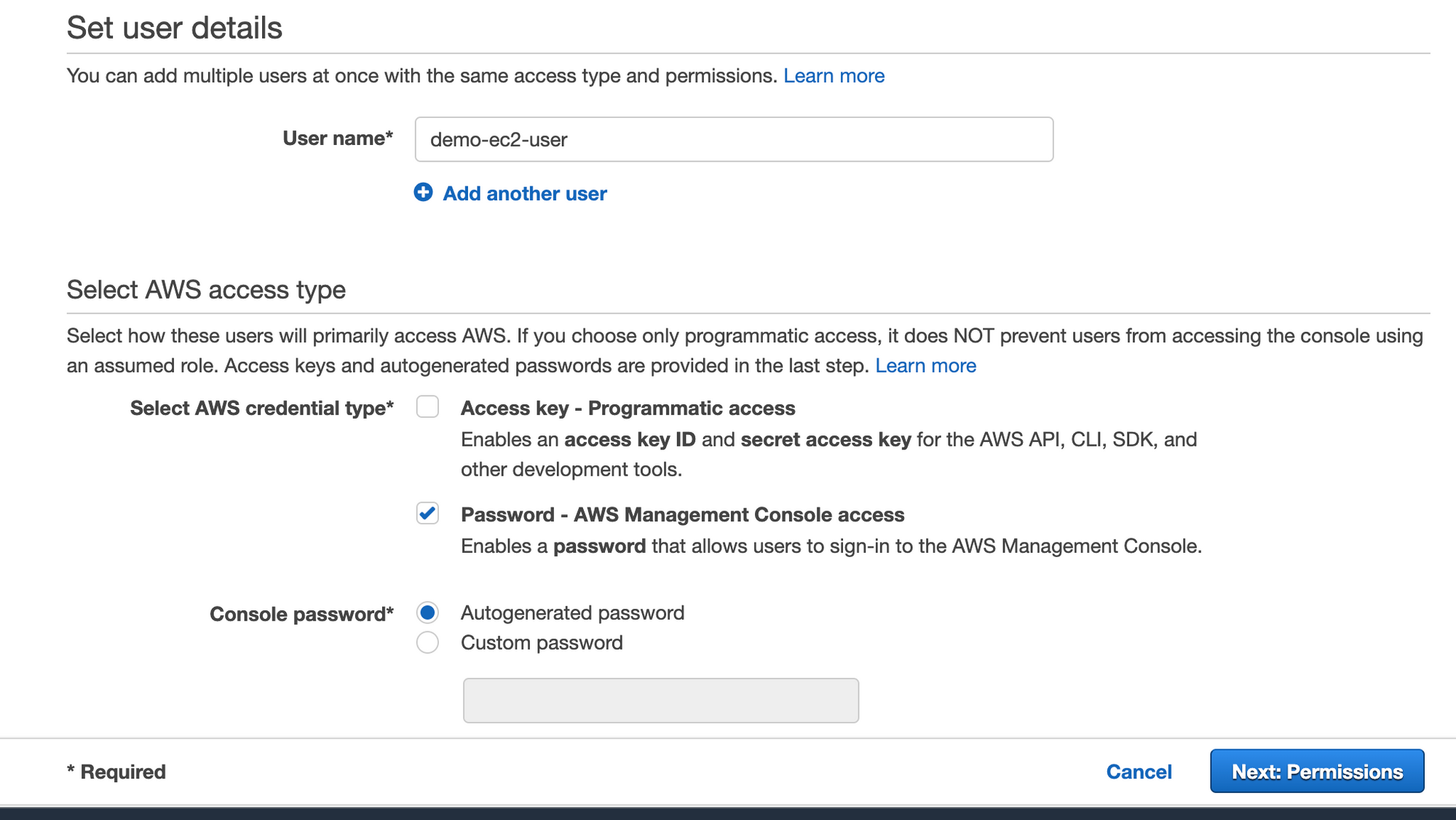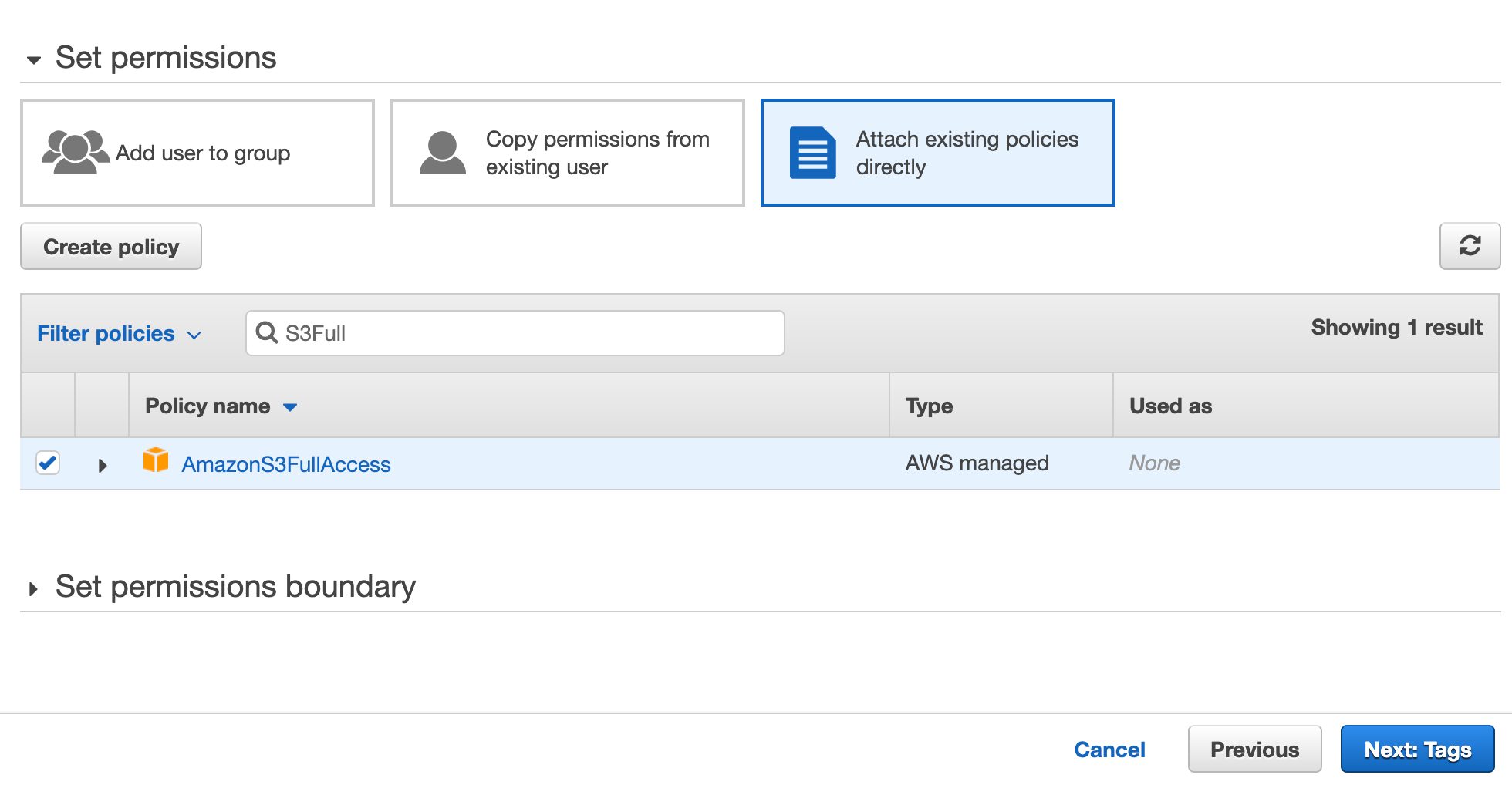1. Access the IAM dashboard at https://console.aws.amazon.com/iam/.
2. Under the Access management section by the left, select the Users option.
3. Click on the Add Users button.
4. Perform the following actions on the next screen:
a. Set user details section: Here, set a user name. Click the Add another user option to add multiple users simultaneously.
b. Select AWS access type section: Here, you need to determine what kind of access you want to grant to the user(s)
I. Select Access key - Programmatic access if you want to grant programmatic access to the user
II. Select Password - AWS Management Console access if you want to grant only AWS Console access to the user with a password.
For simplicity in this example, we will choose Password - AWS Management Console access to grant AWS Console access to the user.
c. For the Console password option, choose an Autogenerated Password or create a custom password.
d. Choose Require password reset to ensure that user resets the password on their first login.

5. Click on the Next:Permissions button.
6. On the Set permissions section,
a. Select the Attach existing policies directly option.
b. Search for S3FullAccess in the search box.
c. Select the AmazonS3FullAccess managed policy as shown below. The selected access policy provides full access to Amazon S3 resources via the AWS Management Console.
d. Click on Next:Tags

7. Add any tags (key-value pairs) if you want to add valuable information to the user.
8. Click on the **Next:Review** button.
9. Click on the Create user button.
10. Note down the user information and click on Close on the next page. You can also download a CSV file with the user’s data.

11. To sign in now with your newly created user, click on the Dashboard option by the left and copy the **Sign-in URL for IAM users** on the right-hand side under **AWS Account**.
12. Sign Out from your root login and use the copied Sign-in URL for IAM users in a browser window. Log in using the newly created IAM user credentials with full S3 administrative permissions and start accessing S3 services and resources like buckets, objects, etc.




